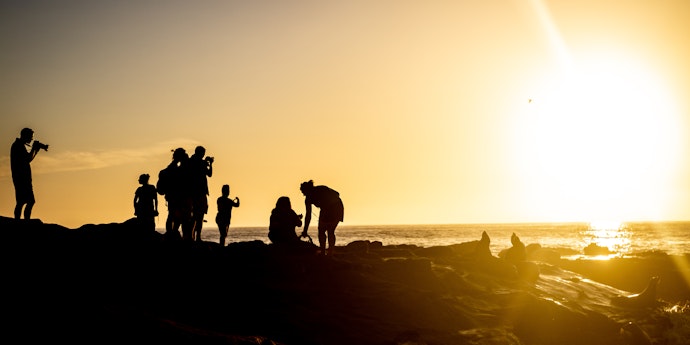As students and educators alike have scrambled to manage the educational experience amidst a sea of uncertainty, we’ve been faced with the stark reality of not having real world applications - field trips - as teaching mechanisms. The storm of COVID-19 has made 2020 and 2021 challenging years. For teachers, surviving 2020 was predicated on creativity, and for learners, that survival revolved around self-motivation.
Field trips don’t just stimulate and develop the skills necessary to translate information from the classroom to the everyday. They contribute to something far more important - imagination. Young students can find themselves perusing a museum, a park, or a factory. Picturing themselves standing on the surface of the moon, tracking a jaguar in the rainforest, setting sail on the open ocean or painting masterpieces exploding with color and expression.
A godfather of modern intellect, Albert Einstein, once said, “[a]ny fool can know, the point is to understand”. And for students, this understanding is predicated on the ability to put down the books and pick up the tools so-to-speak. Experiential learning - learning in the field - is a key foundation of the educational development process. One often grotesquely overlooked by educational curriculum writers and teachers. And in a year defined by trials and travails and void of learning in diverse environments, this sentiment carries more weight than ever before.
There is relief in sight though. As we inch closer to a widely available COVID-19 vaccine, the reality of returning to at least semi-normal learning habitats is becoming more likely. In 2021, educators will have to consider, given the challenges and benefits of each, the three types of experiential learning available to them:
- Institution-based
- School-based
- Virtual
Institution-based Experiential Learning
Where vaccinations, covid regulations and the related parameters allow, 2021 will see the return of off-campus field trips to institutions. This is experiential learning in its most effective form. While there are surely disadvantages - which include the increased challenge of monitoring each individual student, ensuring engagement and of maintaining safe learning environments - field trip learning is often one of the most impactful moments in primary and secondary education. These are the seemingly rare opportunities where education can fuse with tangible experience.
School-based Experiential Learning
Depending on the success, speed and efficiency of the covid vaccines, schools may tend to shy away from taking large groups of students to publicly shared spaces. Understandable, right? So how do educators find the next best option?
They bring the institution expert (i.e. the Zoo Keeper, Space scientist, artist, etc.) to the classroom for a primary/secondary education version of a guest lecture. This option is easily manageable because students are still in the classroom setting, where teachers are used to operating, and effective because students are excited to learn new topics with hands-on exercises. Beware of the mistranslation between the stimulative environment of an off-campus trip and the importing of new material within the confines of the classroom.
Virtual Experiential Learning
The movement to make education more openly available, through the use of virtual offerings such as MOOCs, has been going on for at least a decade. But, it took COVID for educators to finally be forced into action. And while challenges arose, like those stemming from socio-economic differences within the classroom, educators with insufficient technological skills and a learning curve with methods of engagement in a digital setting, virtual learning has many powerful tools.
An example of virtual experiential learning is the Mars Rover software, which allows students in various age groups to engage with NASA’s Mars Rover and learn methods of the scientific process while viewing real-live images from the rover itself. These kinds of tools can be just as powerful as a day at the Natural History Museum, and, in some cases they give students a more realistic glimpse of what a career in that discipline might look like.
Each experiential learning type has its selling point and its bargaining weakness. And in 2021, educators will need to find a balance between promoting the return to in-person and off-campus field trip learning with virtual exercises. After all, the future of education is a hybrid of these options. If we are to truly assist in the evolution of the education system to provide homogenous opportunity for students regardless of socio-economic background, each of these has a role in that process.
